Life at the top: Tommy Hilfiger talks pop, hip and shop from his New York apartment
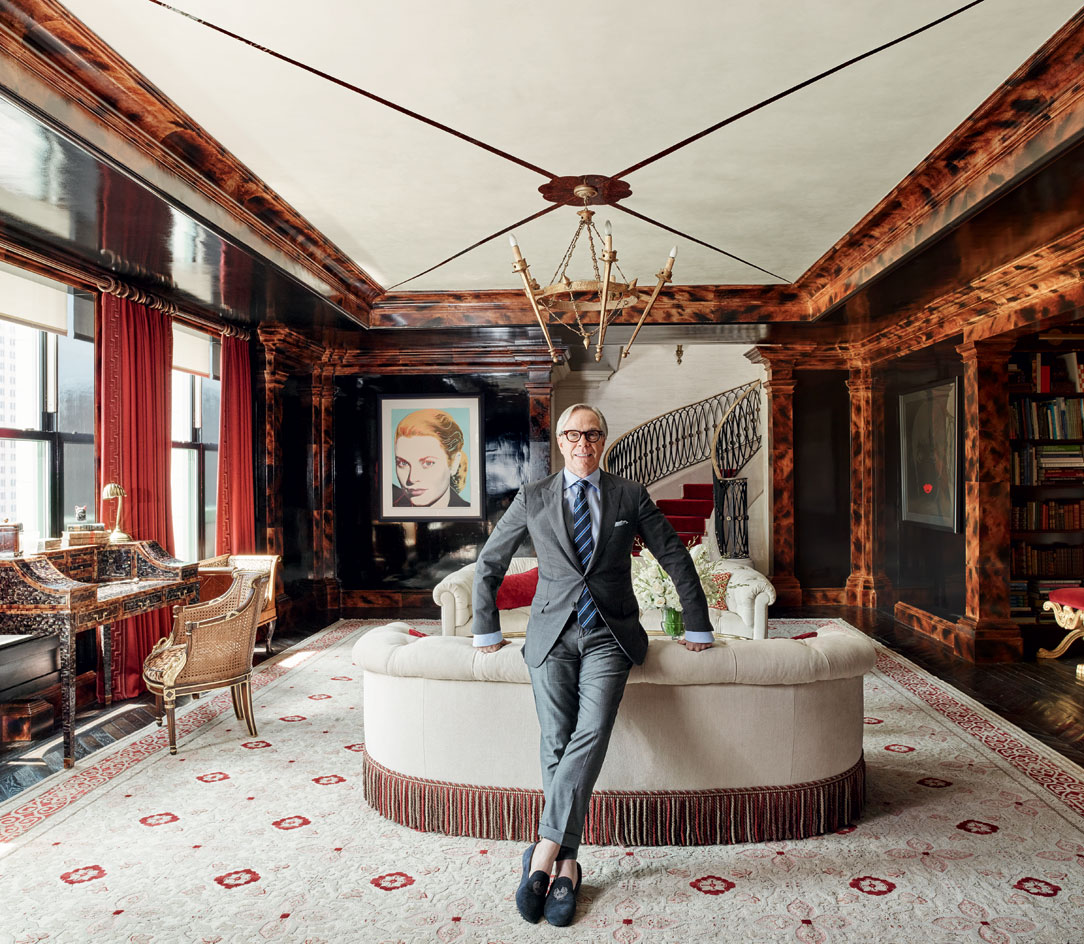
Tommy Hilfiger is sitting at his desk in his art-drenched penthouse duplex atop Manhattan’s famed Plaza Hotel, where he has hung enough Warhols to fill a mini retrospective of the pop master. There’s Liz and Liza Minnelli and Uncle Sam, Truman Capote and, of course, Marilyn. Bespectacled and sockless in a grey suit and black loafers, Hilfiger is trying to articulate just what it was about Andy Warhol that has fuelled his collecting. ‘Andy was at the epicentre of pop culture and putting together what I call FAME – F, A, M, E – fashion, art, music and entertainment,’ he says. ‘To me it was the beginning of pop culture in the world. There was a sense of humour behind it. There was a sense of excitement. It was bringing all these worlds together.’
Warhol’s path-blazing approach was prescient, and Hilfiger has cleverly echoed it in his own enviable, if occasionally rocky, career. Leveraging his role as a fashion designer and his ready access to celebrities, he has become a full-fledged business mogul. While he remains what he terms the ‘visionary’ at his multibillion-dollar namesake brand, he has his hands – and sizeable financial clout – in a shopping mall’s worth of fashion and beauty labels, from the brands of top-drawer designers such as Karl Lagerfeld and Derek Lam to those of musicians with mass appeal, including Jennifer Lopez, Nicki Minaj and Adam Levine. Meanwhile, Hilfiger has sought to keep up a youthful energy in his own collection, in part by tapping celebrity-spawn models like Georgia May Jagger and Kendall Jenner. He is also branching out from the relative safety of the fashion industry, having bought Miami Beach’s Raleigh hotel in 2014 with plans to overhaul the art deco gem; for a pre-renovation bash celebrating Art Basel Miami Beach last December, he hosted Miley Cyrus in a flamboyant stab at performance art, replete with onstage pot-smoking and a costumed phallus. Hilfiger even has a memoir due out in 2016. Not bad for a dyslexic kid from upstate New York who thought he wasn’t smart enough for university. Warhol, an astute observer of capitalism as well as fame, would most certainly have approved.
At 64, Hilfiger remains boyish-looking, with the wiry build of a teenager and hair that appears more blond than grey. He has a toothy, Cheshire Cat grin and, also not unlike Warhol, a calm if distant, somewhat icy demeanor. Leading a brisk tour of the pied-à-terre, which he has had on and off the market for $80m, Hilfiger explains that he and his second wife, Dee Ocleppo, found inspiration in the seemingly effortless eclecticism of Yves Saint Laurent’s Parisian apartment. ‘We wanted to bring it back to its original beauty, Old World glamour and charm,’ he says, ‘with some modern art and some modern touches.’ Hence the heavy red curtains, dark woodwork and leopard-print stools in the living room overlooking Fifth Avenue, with thick green and red fringe dangling from ivory-tufted sofas. A round room with a domed, brick ceiling is encircled by a whimsical mural by Hilary Knight, illustrator of the 1950s Eloise children’s books; it features the Hilfiger clan at play in Central Park below, as well as representations of The Beatles and Marilyn Monroe. The kitchen’s brass-handled, black cabinets and Carrara marble countertops are meant to evoke a French café, and the dining room’s cluster of exotic light fixtures is a nod to Ocleppo’s Turkish heritage.
The dining room walls are covered in mood-setting black-and-white photographs of celebrities from a bygone era: Fred Astaire midair; Bogie and Bacall dressed to the nines; Steve McQueen in a tub with a bottle of champagne and a brunette. Hilfiger points out a pair of early 19th-century Isaac Robert Cruikshank Dandy Pickpockets prints, gifted by Mick Jagger in appreciation for Hilfiger loaning him his Mustique compound while his own was under construction; as well as a seeming requisite for self-made multimillionaires, a Duke and Duchess of Windsor trinket, in this case a British flag that he says came from the yacht they sailed. With few other exceptions, though, the art throughout the duplex is splashy and colourful, by late 20th-century artists with pop cachet and high prices.
Warhol was the first major artist Hilfiger bought. They’d met shortly after Hilfiger moved to New York in the late 1970s. ‘I’d seen Andy at Studio 54 a few times. He was with Halston and Liza Minnelli, Bianca Jagger, Steve Rubell,’ Hilfiger recalls. ‘But it was a loud disco. You can’t really have a conversation.’ A short time later, they met for lunch at Le Cirque, where Warhol introduced him to Stephen Sprouse, an artist he was encouraging to become a designer. ‘Andy was the maestro. He loved putting people together.’ Warhol invited Hilfiger to the Factory, his studio-cum-clubhouse, and offered to sell him art. ‘I really couldn’t afford it.’ But as soon as he could, Hilfiger began snapping up Warhol silkscreens of American icons, from Grace Kelly to John Wayne and Muhammad Ali. He now owns about 25, spread among his many homes, including a new 1970s-inspired, ‘shagadelic’ Miami house and an estate in Greenwich, Connecticut, where he and Ocleppo are raising their six-year-old son. (He also has four grown children with his ex-wife, Susie.)
Hilfiger next added other American artists of his own generation whom he also befriended, including Keith Haring and Jean-Michel Basquiat, both of whom emerged from the New York graffiti scene. Jeffrey Deitch, an art dealer and former director of Los Angeles’ Museum of Contemporary Art, whom he has consulted on acquisitions, says Hilfiger’s choices are in line with his appetite for pop culture. ‘In our field of progressive art, there’s always the question of whether somebody “gets it” or doesn’t. Tommy completely gets it, gets into the mind of the artist,’ says Deitch, who co-hosted the Raleigh party and co-curated this autumn’s ‘Rock Style’ exhibition with Hilfiger at Sotheby’s S|2 gallery in London. ‘He’s able to fuse creative insight and business savvy. It’s a rare quality.’
Fru Tholstrup, director of S|2, says Hilfiger acts both on instinct and, contrary though it may sound, with careful deliberation. ‘He’s incredibly well versed,’ she says. ‘He’s got an incredible eye, which comes from fashion. He knows exactly what he wants.’ Which tends to be recognisable brand names and easily identifiable styles – think Damien Hirst, Takashi Murakami and Jeff Koons – rather than riskier, unproven artists.
Not to suggest that Hilfiger has always played it safe. He opened People’s Place, his first retail store, in tiny Elmira, New York, before he’d even graduated from high school. He’d long struggled with reading and maths. ‘I think one reason I was so entrepreneurial and creative was that I needed a crutch,’ he says. ‘I knew that I wasn’t going to be able to go to college, graduate with a degree and get some normal job.’ He realised he had dyslexia only after seeing it discussed on a TV show as an adult, and though he never sought therapy for it, he taught himself to be a ‘great skimmer’. ‘I did learn how to count money,’ he adds with a self-satisfied laugh. He also learned to compensate for his deficiencies by hiring smartly, from lawyers to seamstresses. ‘That was like, hallelujah. I could just throw ideas out at people and make things happen.’
But when he started People’s Place, he was going by his gut. It was 1969, and he was selling hippie regalia – bellbottoms, incense. Hilfiger opened more stores on college campuses, ‘where the action was.' At its apex there were nine locations. ‘Then we had a bankruptcy when I was 25 because we didn’t know anything about business,’ he says. ‘We just knew how to set up these cool stores. So that was my Master’s. After that I taught myself how to read the business. I figured out that, in order to be really successful, I can’t just be creative.’
After the bankruptcy, he moved to New York and, though he lacked any formal design training, had a brief stint with Jordache, then landed offers from both Perry Ellis and Calvin Klein. He accepted Klein – ‘there was nobody who could hold a candle to Calvin’, he says – but changed his mind when businessman Mohan Murjani agreed to let him design a menswear collection under his own name. Hilfiger’s concept was to give the classic but ‘terribly boring’ preppy uniform of American WASPs and his own youth a makeover. ‘I recreated what a khaki pant was supposed to be, what a button-down Oxford shirt or a polo shirt or a V-neck sweater was supposed to be and made them relaxed, oversized, with all sorts of detail and a cool, nonchalant, hip factor that was so missing from these uptight, preppy clothes,’ Hilfiger recalls. ‘If you looked at the type of people who were wearing these preppy clothes, their personality was as boring as the clothes. I wanted the cool crowd to wear the clothes.’
The concept wasn’t exactly radical, but Hilfiger compensated by hiring advertising maverick George Lois, who devised a brazen campaign including a billboard smack in the middle of Times Square proclaiming Hilfiger the next great American designer in the mould of heavyweights Klein, Ellis and Ralph Lauren. ‘I was nervous. I didn’t want everyone to hate me, and I also didn’t want them to laugh,’ Hilfiger says. ‘After the campaign ran, I wasn’t taken seriously as a designer. That was the only time in my life I thought I should just drop out of this business.'
The cool crowd, however, showed up. And then came an even cooler one: hip-hop stars, who began not only wearing Hilfiger’s garishly outsized logos but rapping about them as well. ‘Girbaud’s hanging baggy, Tommy Hilfiger top gear,’ rapped Grand Puba on Mary J Blige’s What’s the 411? in 1992. Hilfiger himself wasn’t aware of his new admirers until his brother Andy, a musician, told him. But then Hilfiger wasted little time reaching out to pop culture’s latest trendsetters. Snoop Dogg is often credited with adding $90m to Hilfiger’s 1994 sales just by donning his rugby shirt emblazoned with ‘Tommy’ for a performance on Saturday Night Live.
The musicians begot skaters, surfers, athletes, then in a weirdly circular way, preppies, who started wearing their trousers and shirts too big. That kind of firepower is tough to sustain, a lesson Hilfiger learned the hard way, as he became a kind of corporate fashion victim, careening from one trend to the next. The quest to stay out in front suddenly bit him on his red-white-and-blue-boxer-shorted behind. Sales tanked. ‘How do you create cool?’ Hilfiger muses rhetorically in his Plaza study. ‘What happened is a lot of the urban brands started sprouting up, and a lot of these kids started buying the urban brands, and then Gucci and other brands. They were moving on, and I had to figure out what I was going to do next.’
Along the way, Hilfiger had cashed in by taking the company public in 1992, setting off the designer craze for IPOs. As business faltered, the firm went private again, and he eventually found the creative solution to its troubles in a return to its preppy roots, surrendering attempts to be avant-garde. ‘In fashion you can’t remain where you are, you have to move forward,’ he says. ‘We evolved the brand without losing the DNA. That’s the key.’ In 2010, PVH Corp, which previously acquired Calvin Klein, paid $3bn for the business.
Hilfiger still owns a piece of it, and in this, its 30th anniversary year, doesn’t seem all that nostalgic about the old days – perhaps because it no longer commands his full attention. The Plaza duplex is convenient to his other office, that of Star Branding, the company he started with Andy Hilfiger and two other partners to create lifestyle collections for celebrities. The Hilfigers had originally targeted Britney Spears, but when negotiations with her handlers stalled, Andy suggested Jennifer Lopez instead. Lopez was hungry to trade on her rising star; Hilfiger says she was refreshingly cooperative. When I express scepticism, he responds, ‘Well, this was before “Jenny from the Block”.’
Later in the afternoon, Hilfiger pops by Christie’s to take a quick gander of upcoming sales previews. He moves through a smattering of contemporary prints proclaiming his love for Yayoi Kusama and declaring Ellsworth Kelly a genius, though neither is represented in his own collection, before lingering among some vintage gas station signs. ‘This reminds me of growing up in the 1950s, 1960s, seeing Mobil and Gulf stations,’ he says. ‘I think they’re really cool because I love logos. It’s my most important asset, my logo.’
He then catches sight of model locomotives. ‘We had a train set,’ he recalls. ‘I loved toys when I was a kid. I was obsessed.’ He grew up the second oldest of nine siblings. ‘My mother worked nights in a hospital as a nurse. She worked from 11pm to 7am. Then she would come home, make us breakfast and get us off to school. Maybe she would catch a catnap in the afternoon.' He remembers her as resolutely positive – he jokes that if the bread were stale, she’d say it tasted better that way. His father, a watchmaker in a local shop, was tougher to please and clashed with his eldest son over the Vietnam War.
‘He wanted me to be something I wasn’t. He wanted me to be a great athlete. He wanted me to be a great student. I was neither. I think I disappointed him,’ Hilfiger says, pausing for a moment before adding, ‘I found my calling, I guess.’
As originally featured in the November 2015 issue of Wallpaper* (W*200)
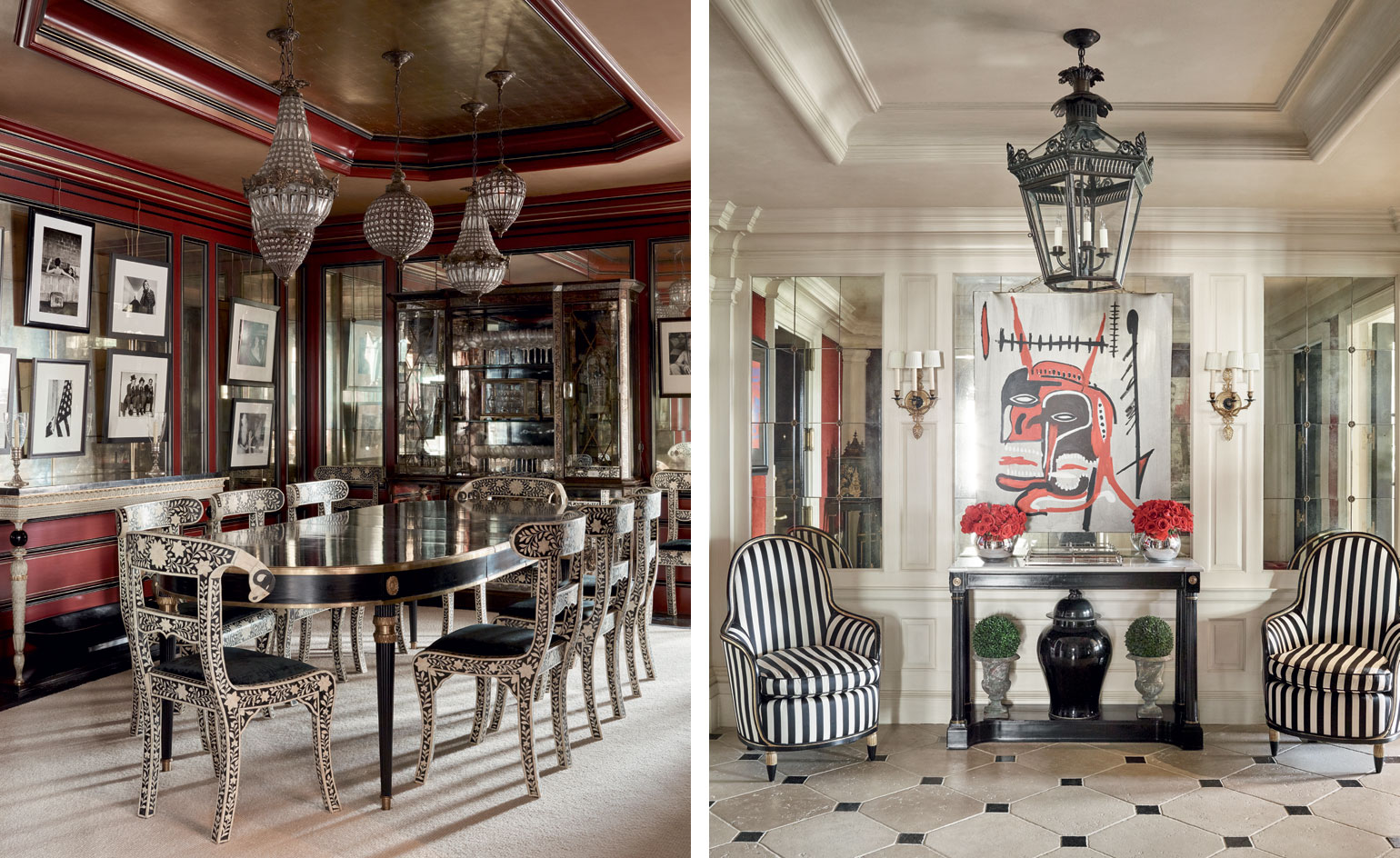
Left: Untitled (Devil’s Head), 1987, by Jean-Michel Basquiat in the foyer. Right: The dining room nods to the turkish heritage of Hilfiger’s wife, Dee Ocleppo, while black and white photographs, mostly of Golden Era Hollywood, adorn the walls
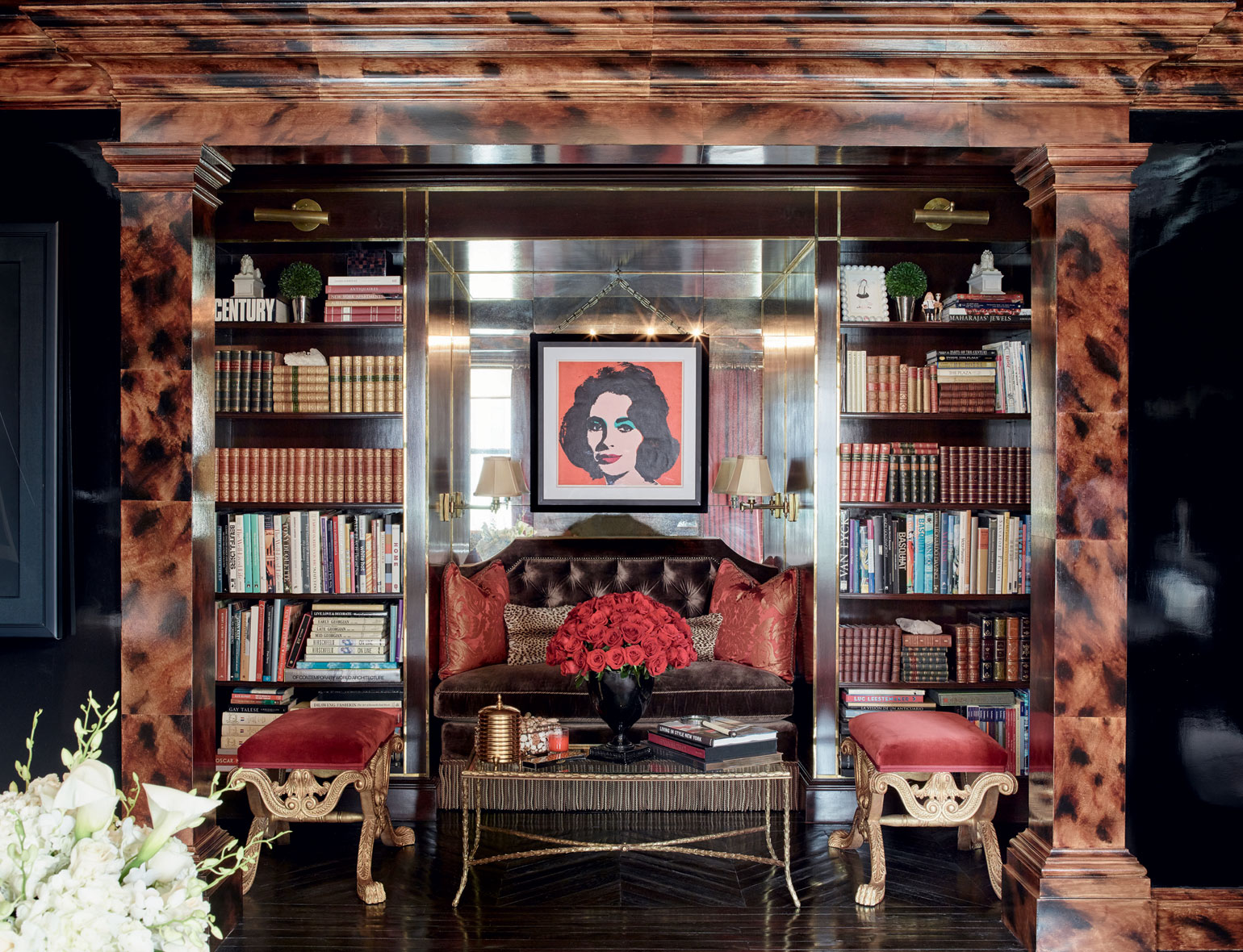
An alcove in the living room, with Warhol’s Liz, 1964
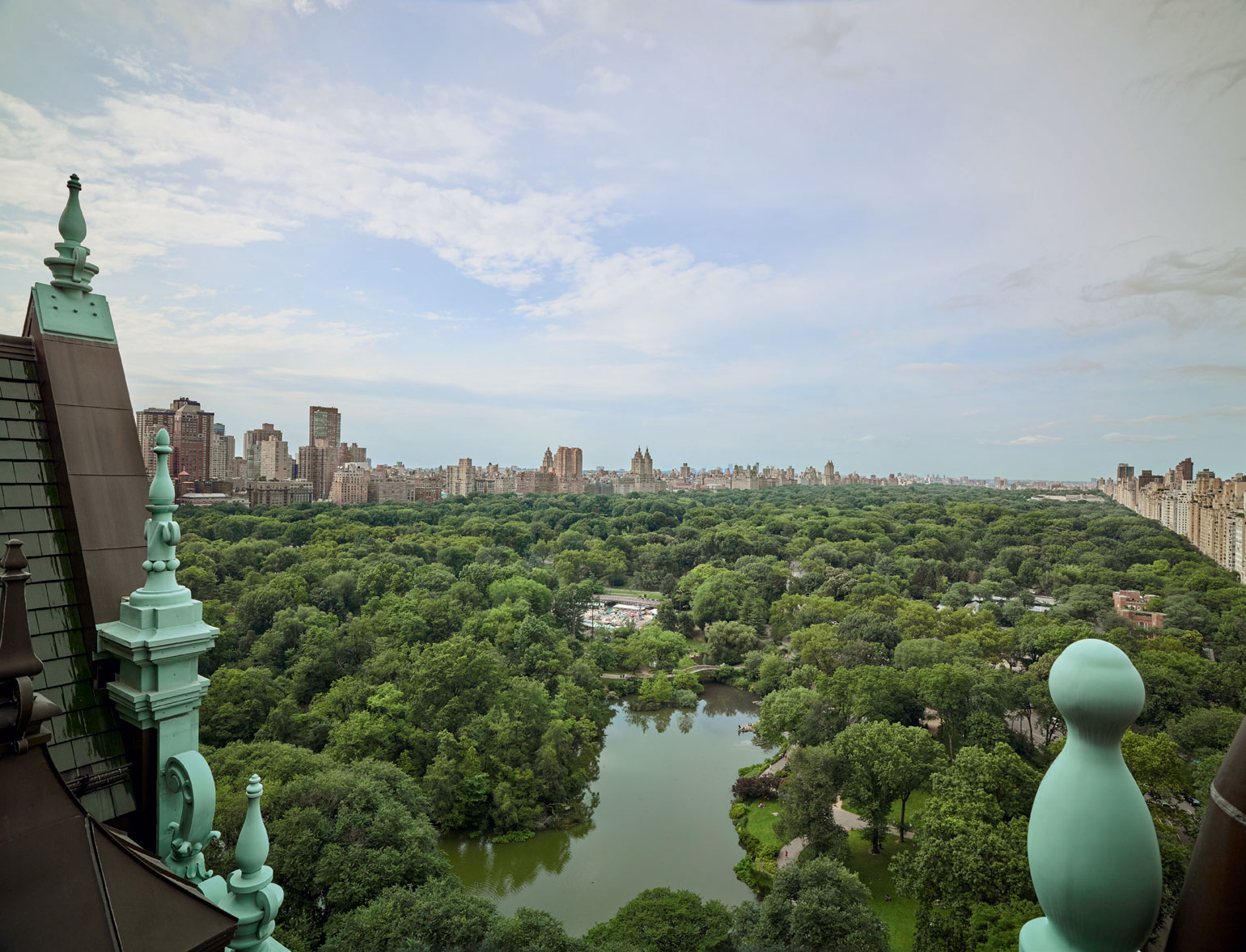
The view of Central Park from the master bedroom’s small terrace
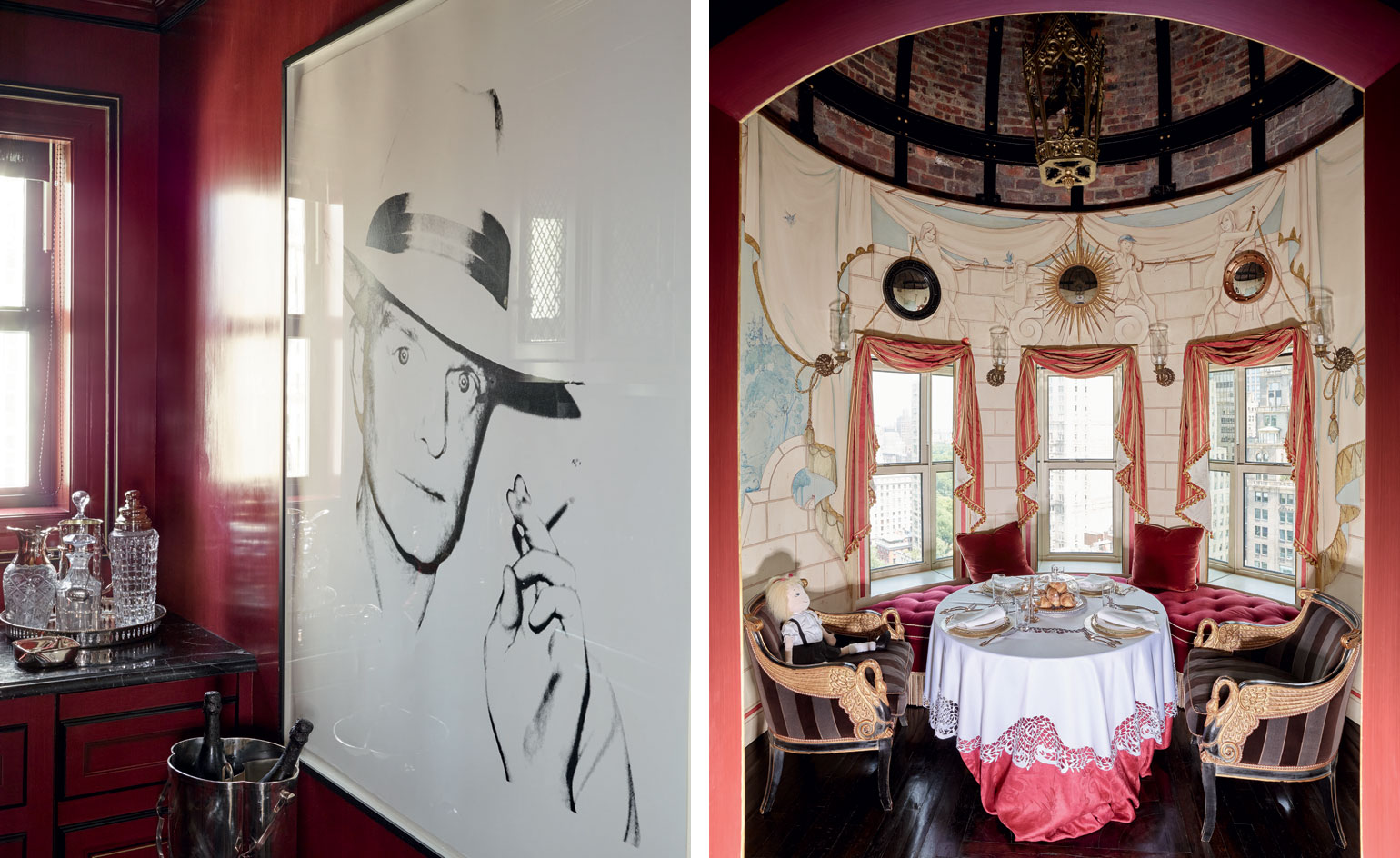
Left: Hilfiger’s Warhol collection includes Truman Capote, 1979, located in the bar. Right: the round Eloise room off the dining room (named after the children’s book character who lived at the Plaza) with a mural by original Eloise artist Hilary Knight, who incorporated the Hilfiger family, plus a few celebrities, into the work

Left: Warhol’s Marilyn, 1967, located on the landing. Right: Hilfiger with Warhol’s Indian Head Nickel, 1986
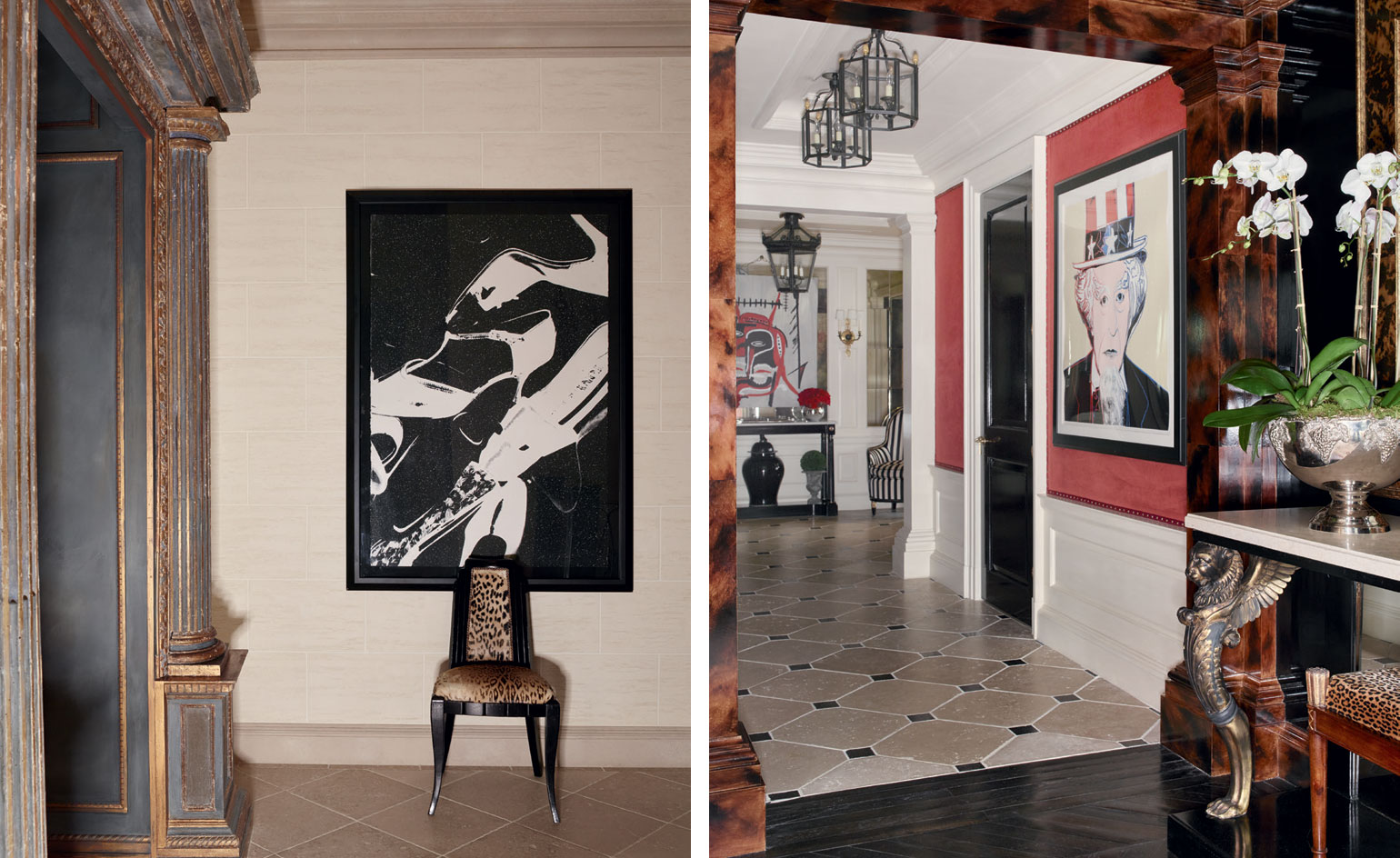
Left: Diamond Dust Shoe #255, 1980, by Warhol. Right: looking down the hall from the living room, with Warhol’s Uncle Sam, 1981, and Untitled (Devil’s Head), 1987, by Basquiat in the foyer
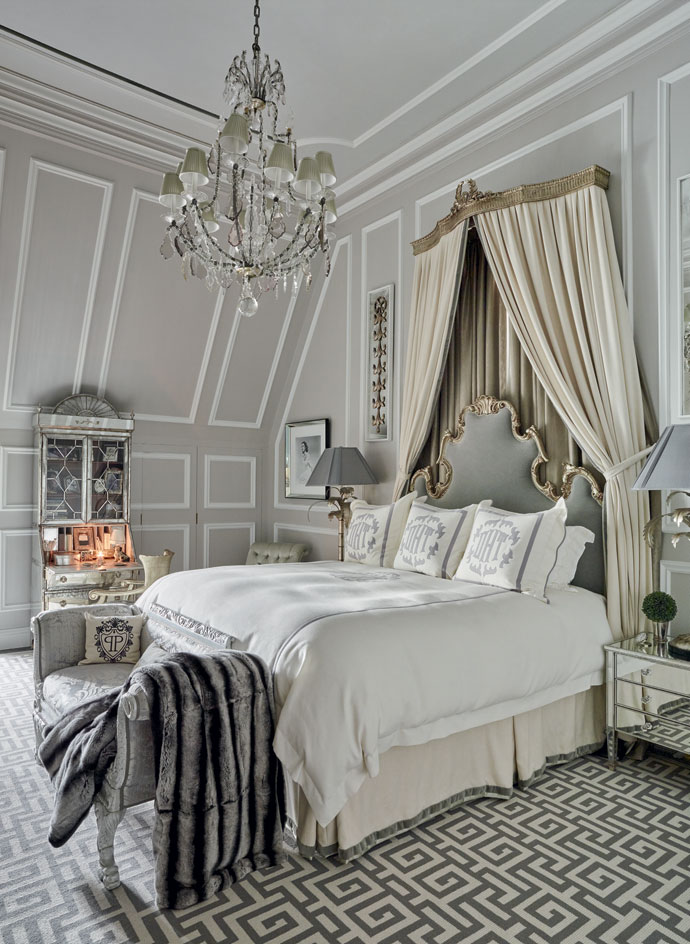
The master bedroom
INFORMATION
Photography: François Dischinger
Wallpaper* Newsletter
Receive our daily digest of inspiration, escapism and design stories from around the world direct to your inbox.
-
 Australian bathhouse ‘About Time’ bridges softness and brutalism
Australian bathhouse ‘About Time’ bridges softness and brutalism‘About Time’, an Australian bathhouse designed by Goss Studio, balances brutalist architecture and the softness of natural patina in a Japanese-inspired wellness hub
By Ellie Stathaki
-
 Marylebone restaurant Nina turns up the volume on Italian dining
Marylebone restaurant Nina turns up the volume on Italian diningAt Nina, don’t expect a view of the Amalfi Coast. Do expect pasta, leopard print and industrial chic
By Sofia de la Cruz
-
 Tour the wonderful homes of ‘Casa Mexicana’, an ode to residential architecture in Mexico
Tour the wonderful homes of ‘Casa Mexicana’, an ode to residential architecture in Mexico‘Casa Mexicana’ is a new book celebrating the country’s residential architecture, highlighting its influence across the world
By Ellie Stathaki
-
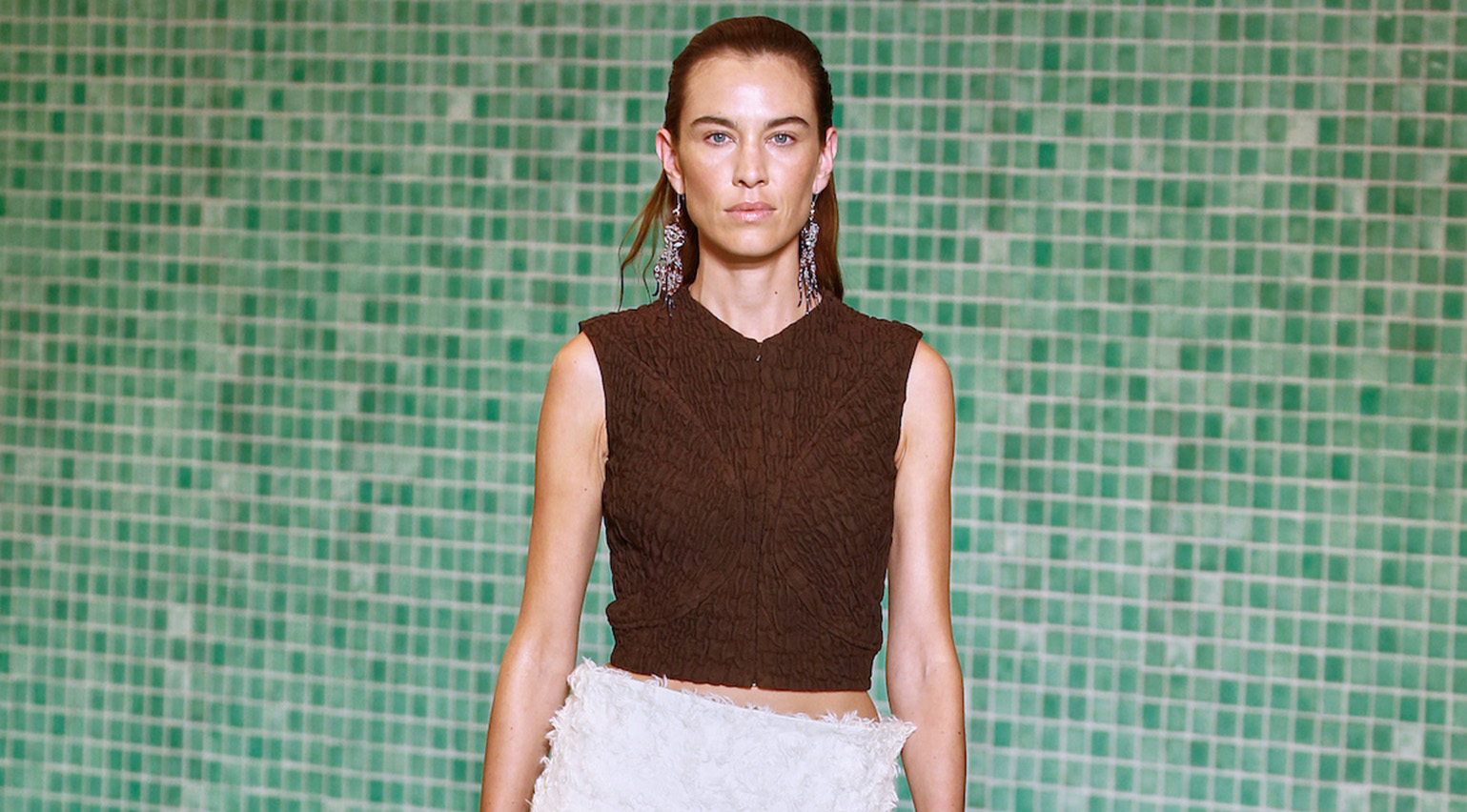 New York Fashion Week S/S 2025 highlights: Tory Burch to Michael Kors
New York Fashion Week S/S 2025 highlights: Tory Burch to Michael KorsWallpaper* fashion features editor Jack Moss selects the best of New York Fashion Week S/S 2025 in our ongoing round-up, from a reinvention of sportswear at Tory Burch to Michael Kors’ Italian escape
By Jack Moss
-
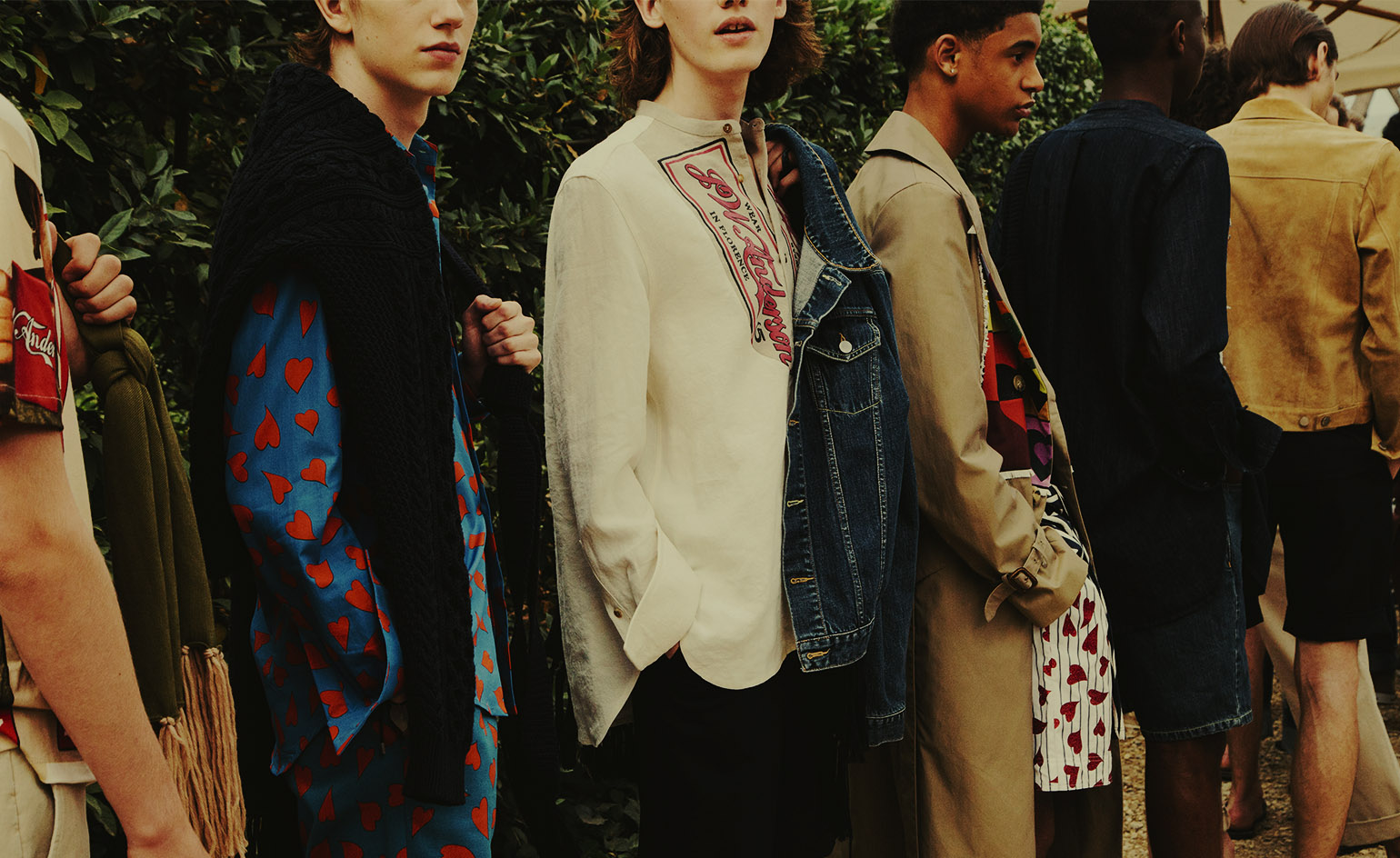 Hot tickets: the designers getting our temperatures rising at Pitti Uomo 2018
Hot tickets: the designers getting our temperatures rising at Pitti Uomo 2018By Laura Hawkins
-
 Set stories: the top womenswear show venues from S/S 2017
Set stories: the top womenswear show venues from S/S 2017By Ali Morris